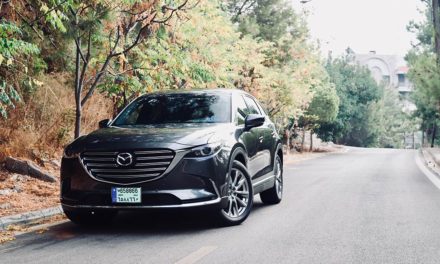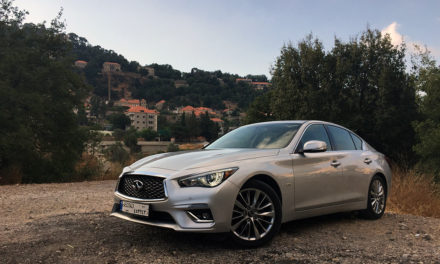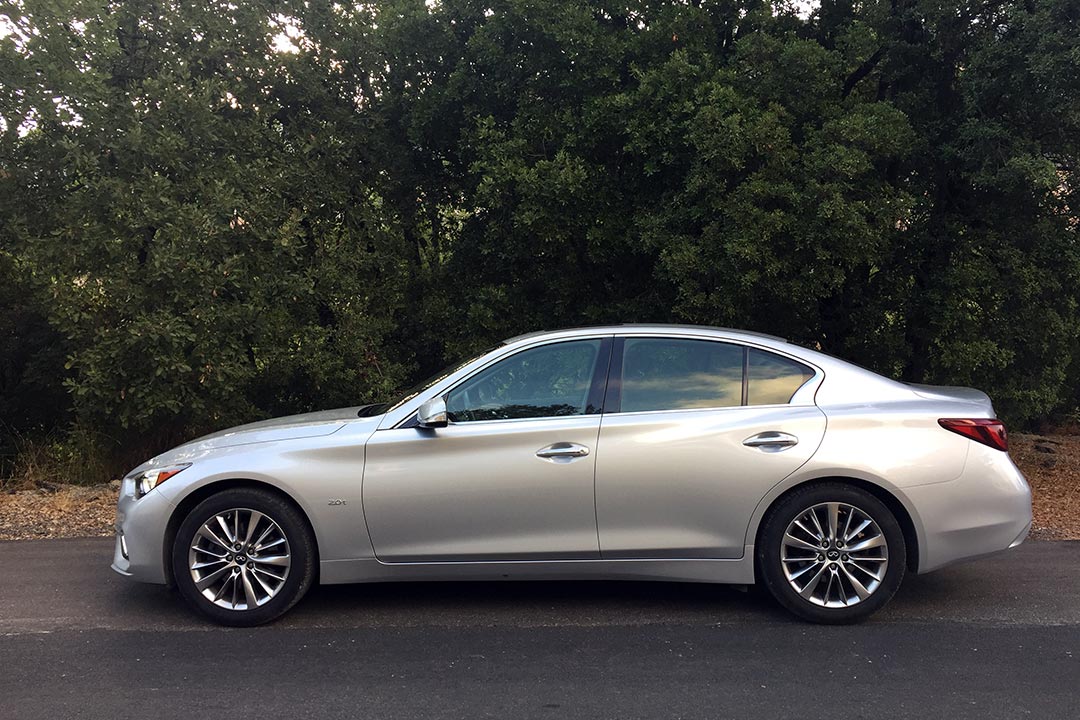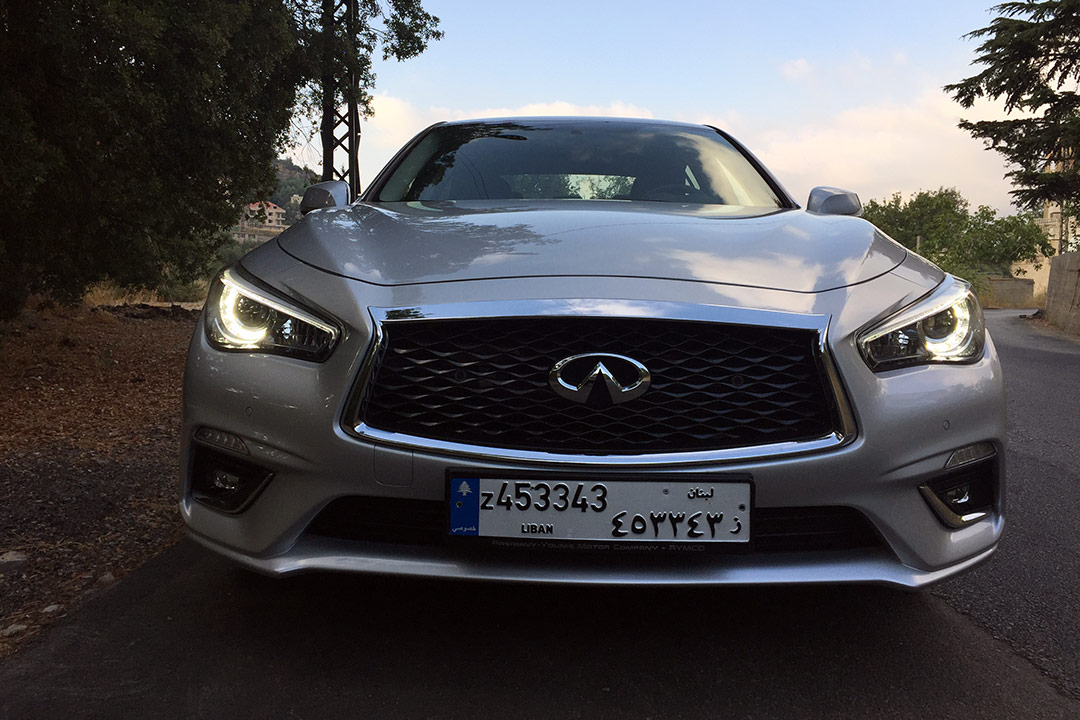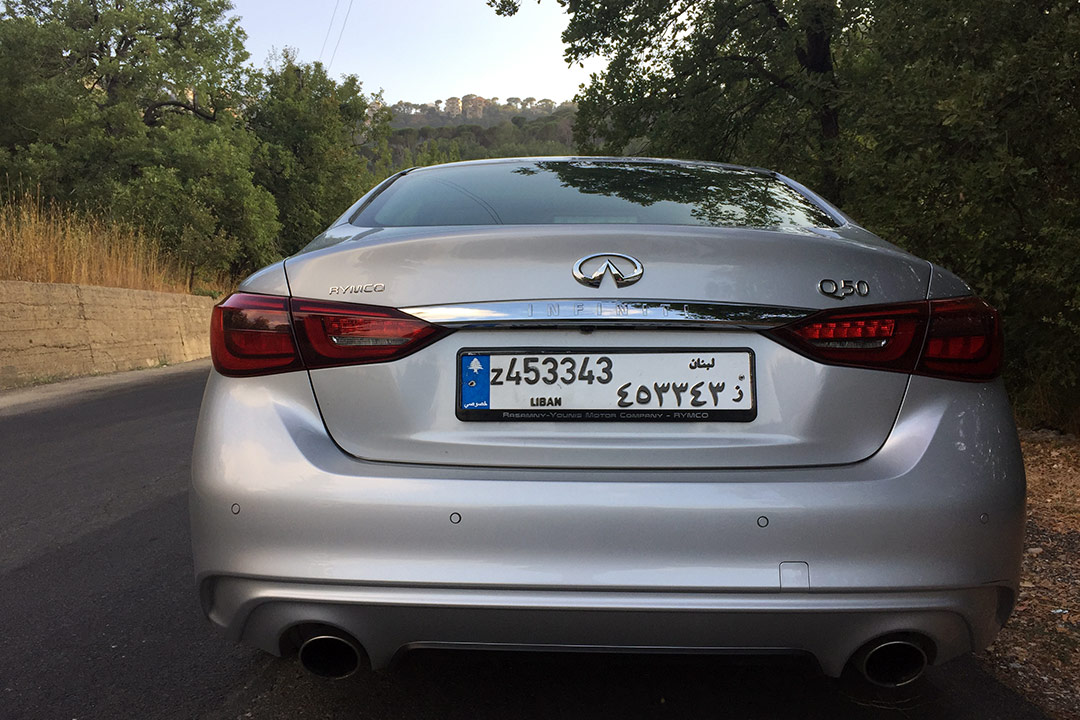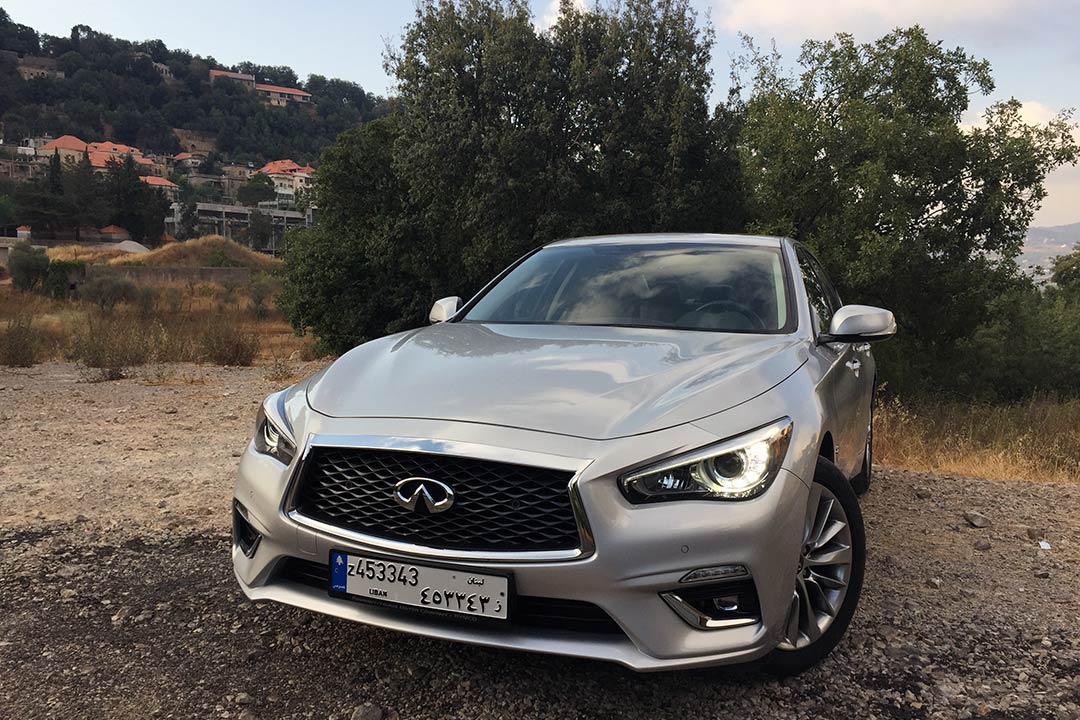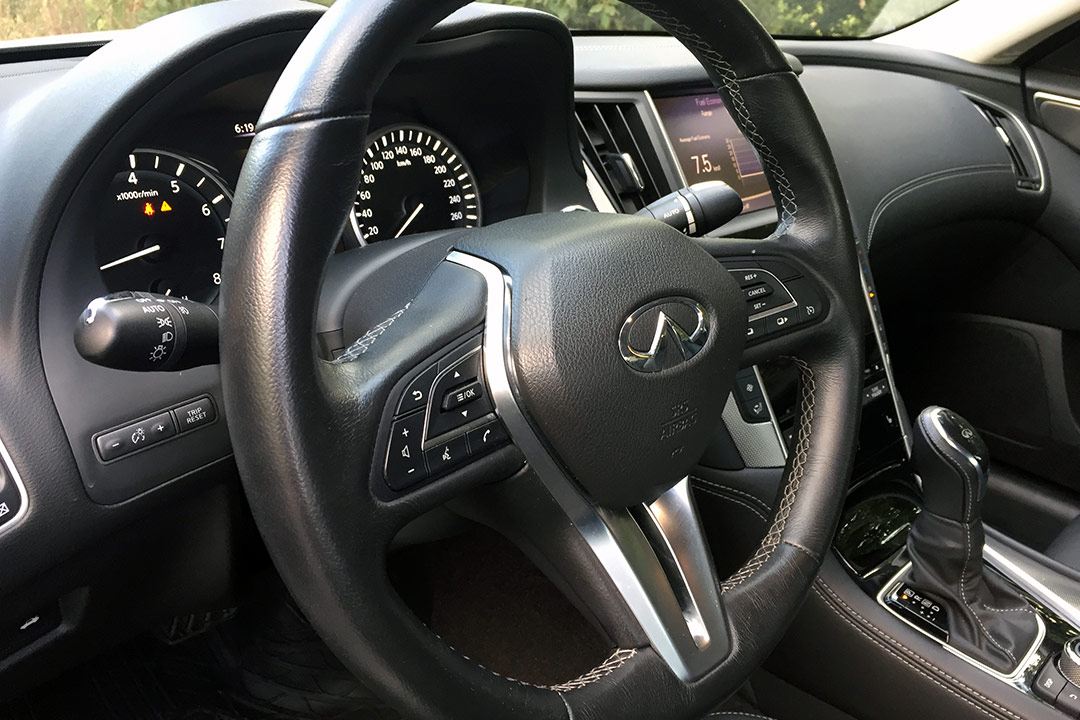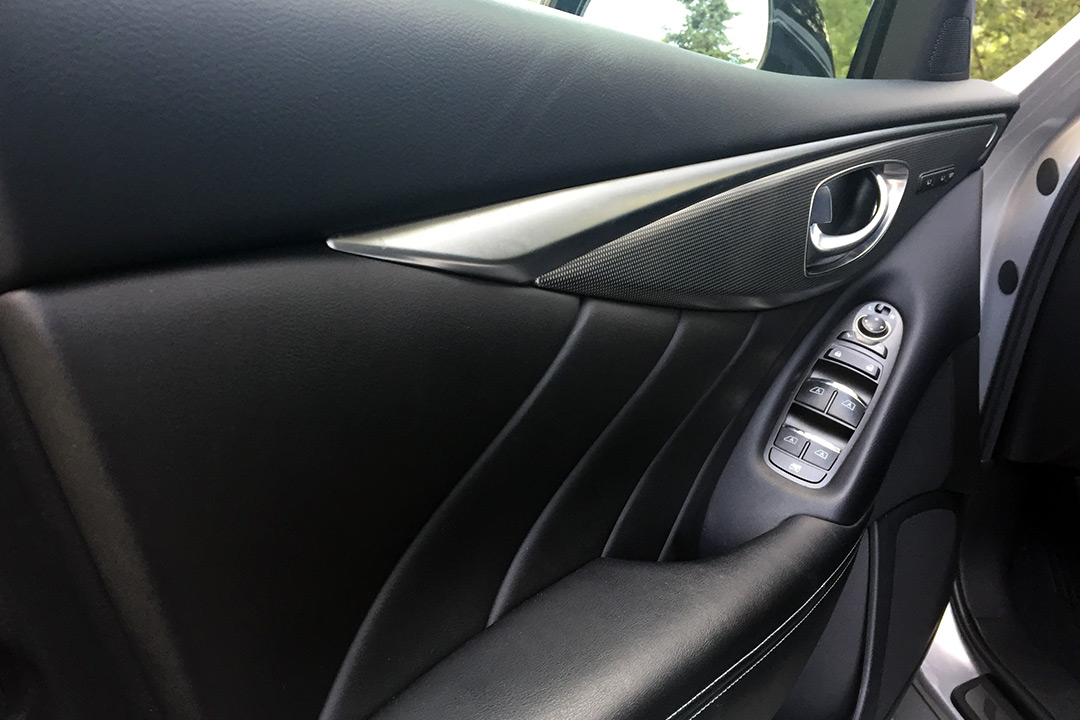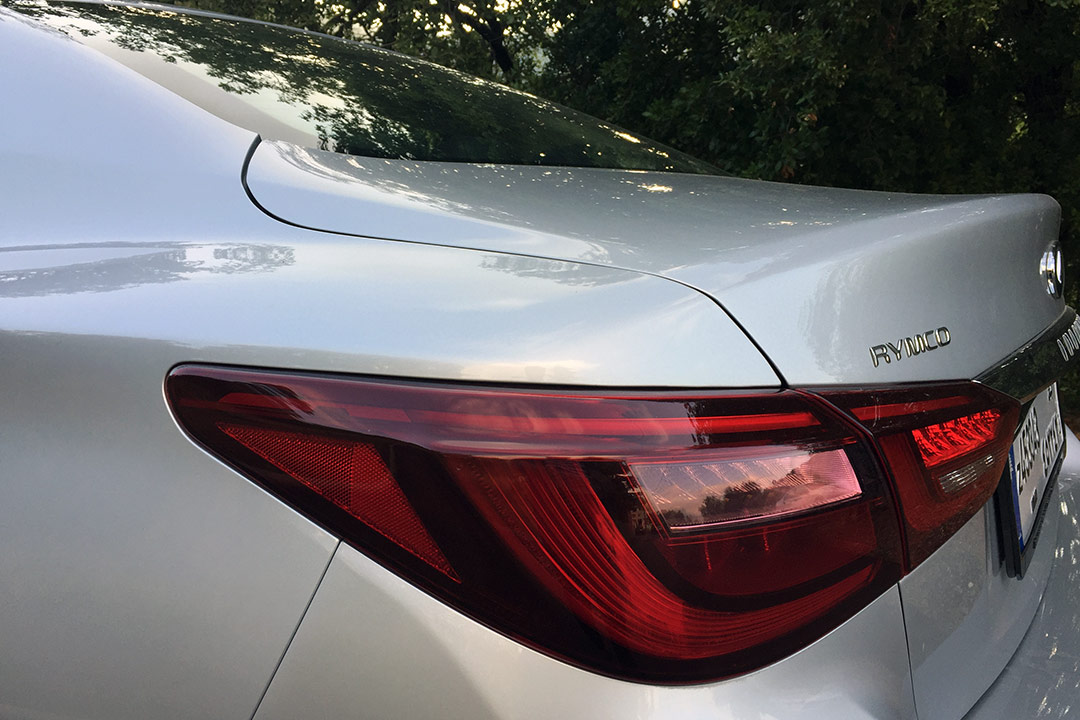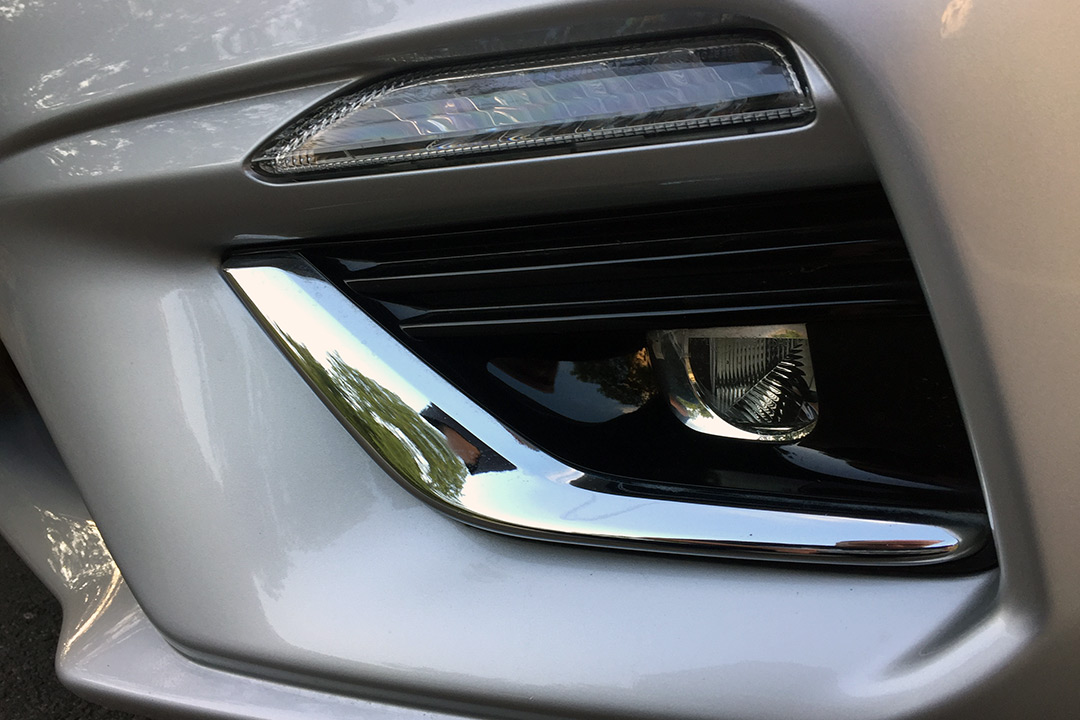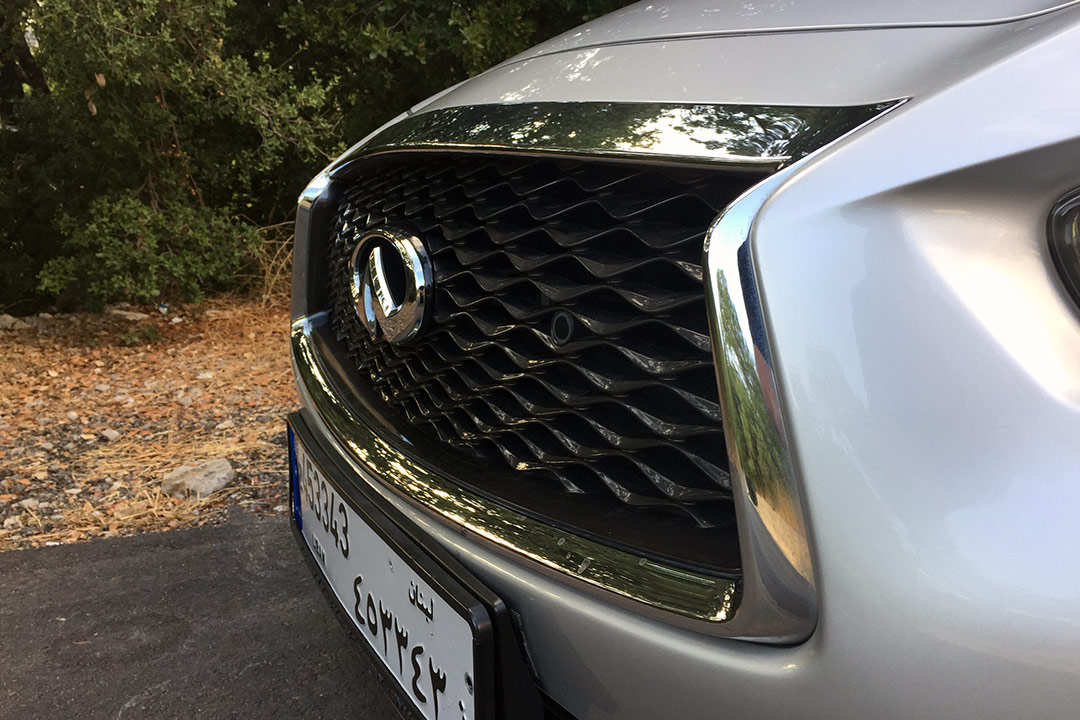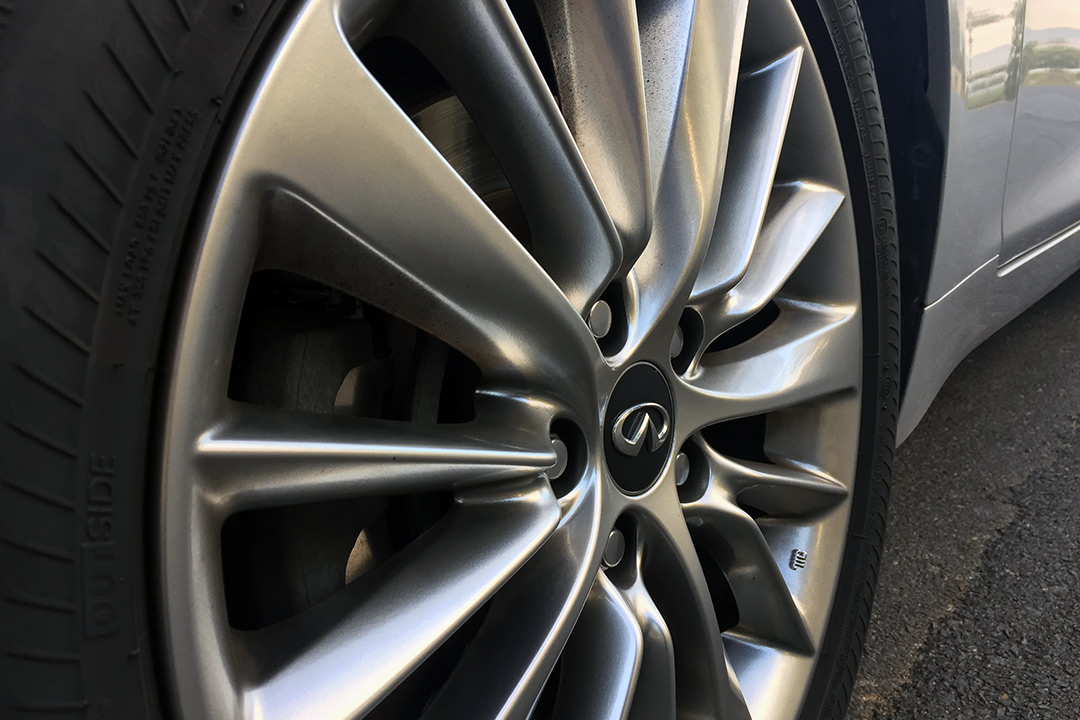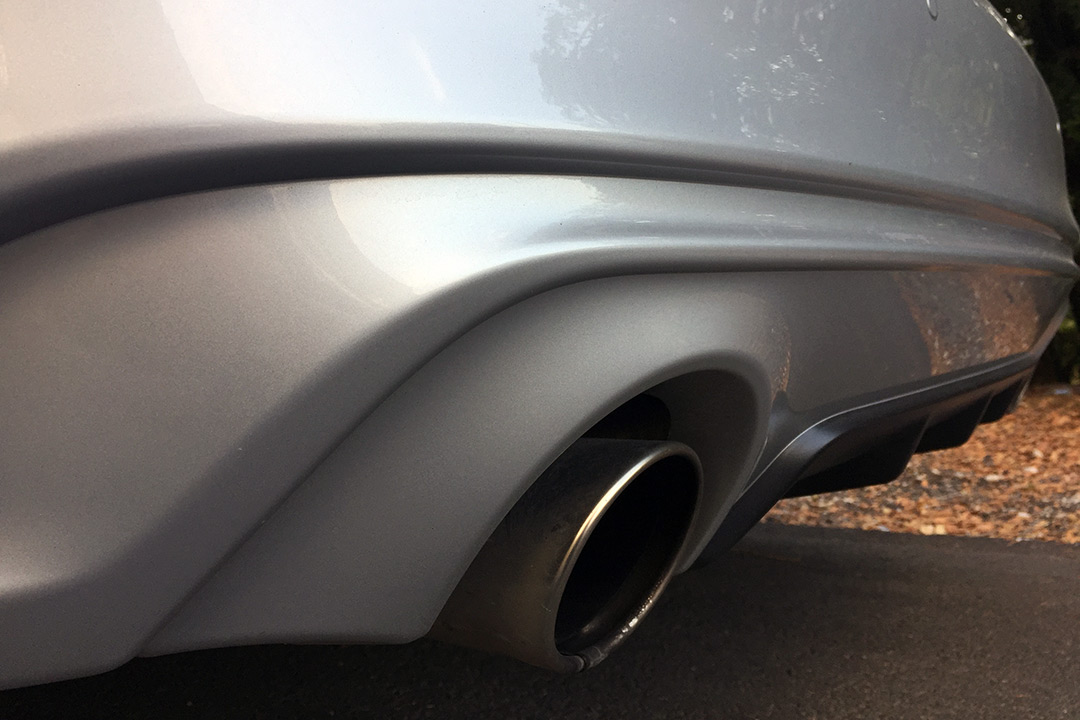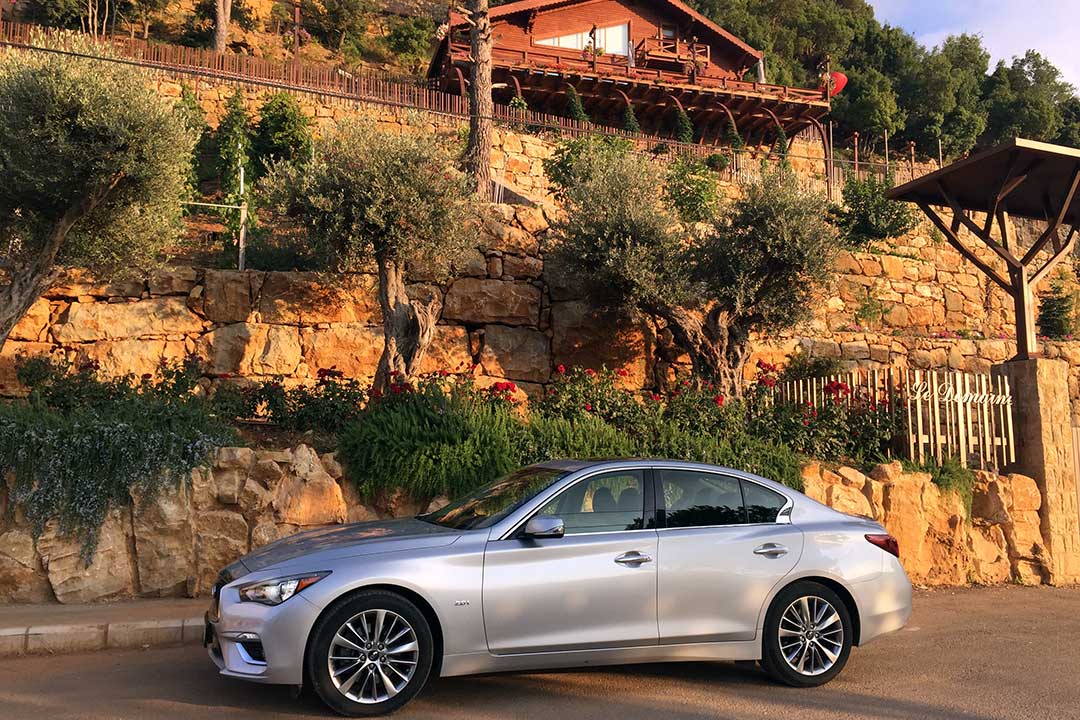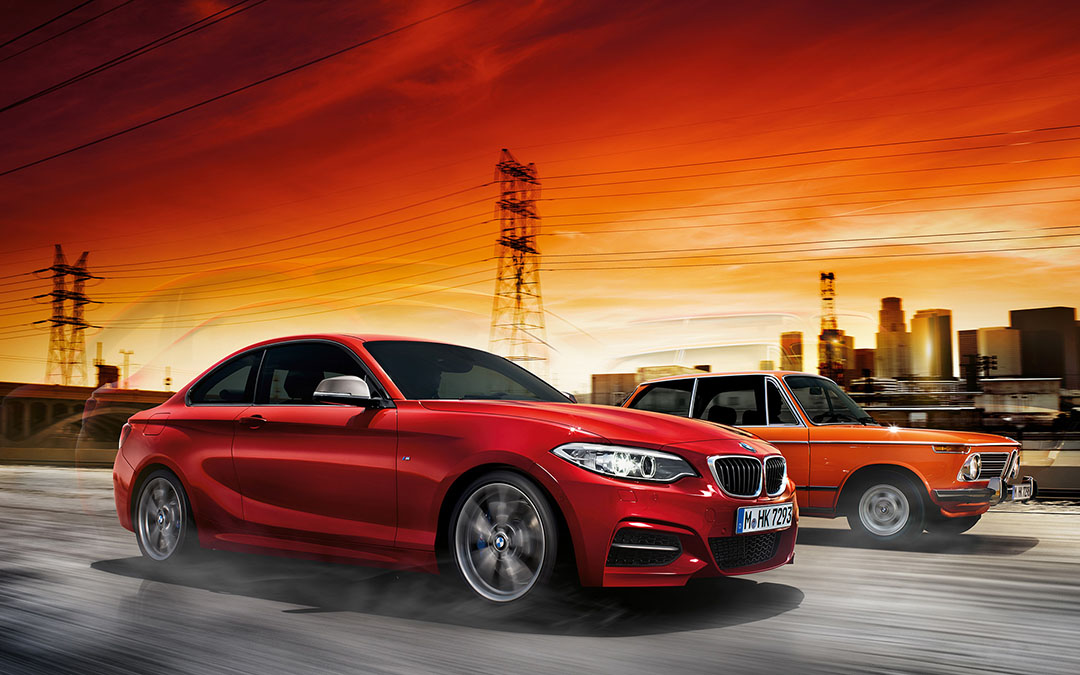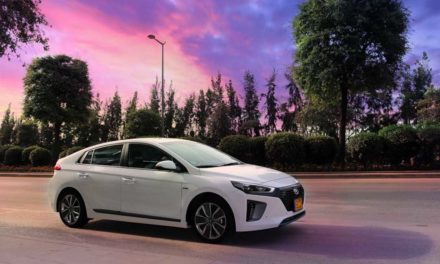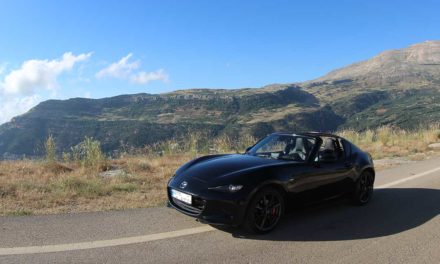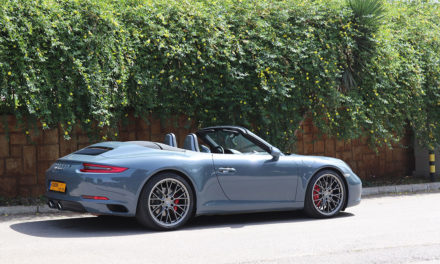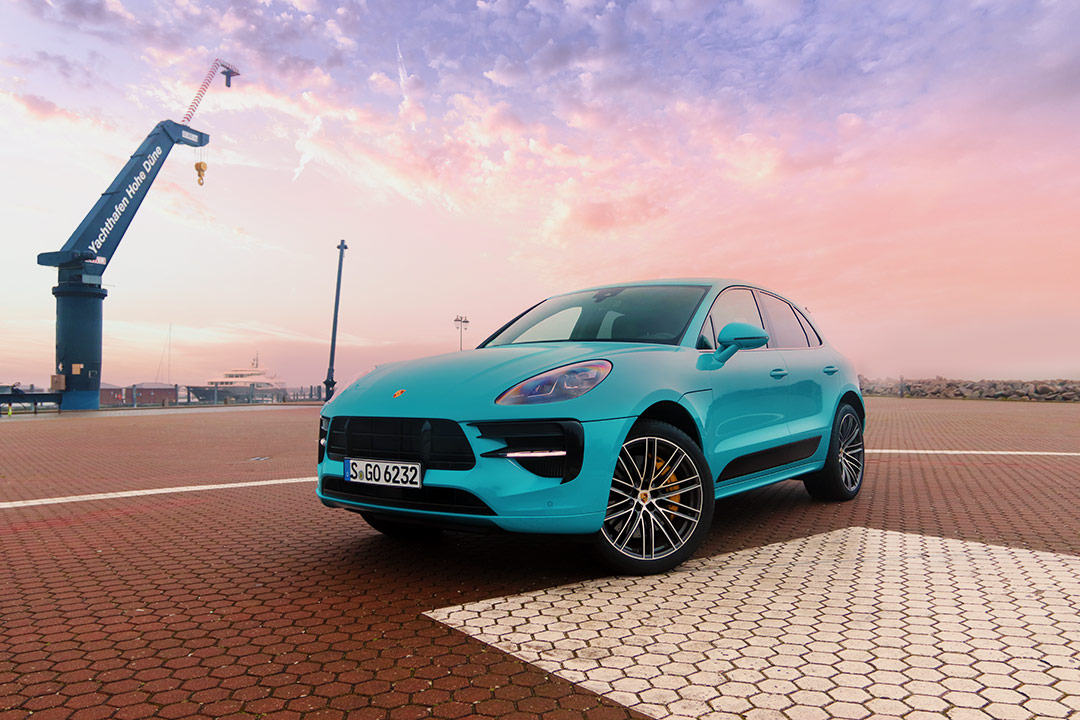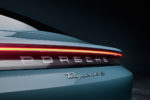Charming Infiniti Q50 As Arresting As Ever
BEIRUT: Sedans are making a comeback. After several years during which crossovers became THE body style to drive, people finally remembered that premium sedans had their own unique allure, not to mention far better handling thanks to a lower center of gravity.
And that development reminded me that it had been four years since I last tried an INFINITI Q50, and I was curious to see how it has held up. Therefore. I commandeered a nice silver example for a weekend and put it through its paces.
For those unfamiliar with this svelte sedan, let me catch you up. The Q50 2.0T has styling. By that I don’t mean just a bunch of two-dimensional graphic lines, but rather a flowing, organic design. The car, like the rest of its INFINITI stable mates, looks sculpted, from the taut shoulder line that emerges from the sheet metal just behind the front wheel well to a second, muscular fold that curves atop the rear wheel and shoots toward the back. Similar taut, stylish lines adorn the hood, which ends above the now trademark hourglass black grille with a chrome frame.
“People don’t buy cars to cite facts and figures to each other; they buy them to get around”
That itself is framed by a pair of combination headlights with LED accents. Add a pair of LED fog lights and you have an aggressive yet refined fascia. The rear also sports well-designed LED tail lamps, which lend the car an overall harmonious allure.
That stylish exterior design language carries into the interior, and once you open the driver’s door with the smart key the intrigue amplifies. This is not a flimsy door found on many entry-level Japanese sedans; it has heft and feels not unlike its counterparts found on offerings from Mercedes-Benz or BMW. Step inside and pull the door shut and it closes with the same gravitas. There’s no rattle or shake, just a solid yet subtle “thump,” like you’re closing a bank vault.
The interior is generously lined with fine leather, which feels delicious to the touch and covers the extremely comfortable seats, the multifunction steering wheel and the gear shift handle. As a bonus, the front seats are heated and power adjustable with memory.
Even one of my pet peeves is satisfied, including all four windows having the auto up/down feature. Brilliant.
Essentially, the cabin feels like a twin-cockpit setup, with traditional gauges behind the steering wheel with a helper screen nestled between them for key driver information. All surfaces feel nice, soft to the touch; no gimmicky plastics here. Vertical vents frame the center stack, as do the buttons for the dual-zone climate control. Glance down and you notice that the center console has been styled asymmetrically, a diagonal division placing the gear shift lever and control knob to the left and a pair of cup holders to the right.
The trim in the model I was driving featured a combination of gloss piano black and textured Kacchu Aluminum, lending the interior a sophisticated yet high-tech appeal, which actually worked well with what happened next.
I put my foot on the brake, pressed the start button, and the car came to life, and I don’t mean just the engine. The seat returned to the ideal driving position and the steering wheel, raised to facilitate ingress, lowered to the appropriate position. And that center stack woke up and I felt right at home.
The Q50 features not one but two LCD touchscreen displays: an 8-inch upper screen and another 7-inch lower screen that display audio and climate control information among other features that bring your digital life into the car in an intuitive system. You just touch, tap, or swipe to navigate email, stream music and access social media through the numerous apps at your disposal via the Infiniti InTouch system.
But as great as all this is, you don’t need to leave your living room for such comfort and technology. What really matters is how it drives, so I pushed a button the unfold the power mirrors with LED indicators (yes it has those too) slid the car in drive and released the parking brake.
The Q50 glided forward silently, so silently in fact that I had to check to make sure the engine was in fact turned on and the car wasn’t simply rolling. I started the air conditioning and it took about 10 seconds for the air coming out of the vents to become frigid. In under a minute the interior felt like Siberia, not an easy task considering the sweltering 38 degree C heat outside.
I got on the road, which thankfully wasn’t congested with cars (Yes, I know. Very odd for Beirut). I floored the throttle and the car pounced, POUNCED! That shouldn’t be a big deal, but this car weighs nearly 1,650 kilograms, and is powered by a four-cylinder 2.0-liter engine.
The power started from very low in the rev band and did not quit till nearly at the redline, when it’s four-pot limitations manifested and the engine started to strain. In all fairness it’s not the holy grail of performance, but there’s much more power than you expect, and thanks to the turbo you get 208 horses and 258 lb-feet of torque. As a point of comparison, my BMW E92 boasts a normally aspirated 3.0-liter six-cylinder – 50 percent more capacity and two more cylinders – and produces 228 horses.
But people don’t buy cars so they can cite facts and figures to each other; they use them to get around, hopefully in a satisfactory fashion. I needed to find out whether the Q50 was still the all-star I remembered it to be, and so I tasked it with transporting myself and three members of my family to Khenshara, a little bit after Bekfaya, to attend a classic car show.
Thankfully, space is ample in the Q50, and there was plenty of headroom and knee room for everyone. Unlike last time I drove the car, I wasn’t taking anyone to the airport so I had no need for the trunk, but previous experience showed me that the Q50’s 500-liter trunk can easily swallow up plenty of luggage with room to spare.
On the road, just as I remembered, the Q50 had more ponies than you need in everyday driving, and on the uphill sprint it performed like a thoroughbred, charging from bend to bend without breaking a sweat, power surging at the lightest nudge of the throttle and taking corners firmly planted on the asphalt at above moderate speeds.
The power delivery is smooth and silent, and that comes as no surprise since the engine is the based on the one used in the Mercedes-Benz C-Class. The seven-speed automatic transmission with manual feature is also silent and shifts are practically imperceptible. The box works well with the engine, although paddle shifters don’t appear to be included in the 2.0.
The car also feels much more agile than its size, which is slightly bigger than a 3-Series BMW, would suggest. Handling is superb, thanks to double wishbone suspension up front and multi-link in the back. Braking is also outstanding, thanks to anti-lock brakes on all four corners as well as brake assist and electronic brake force distribution.
Steering is nicely weighted and precise as well, and thanks to the Direct Adaptive Steering, completely isolates you from the road’s imperfections – there’s nary a judder transmitted to your hands when you hit road bumps or potholes. However, while that may prove to be a benefit in a comfortable family car, that steer-by-wire setup undermines the Q50’s sporting aspirations as you get no road response whatsoever. But this is a family sedan and not a canyon racer so I wouldn’t worry too much about it. In fact, that’s probably an advantage considering the state of our roads!
The drive up was also exceptionally safe because in that regard the Q50 2.0T hits all the right marks. You get front driver and passenger air bags, front side air bags and front-to-rear curtain air bags. Also included are traction control and stability control, features that should be an integral part of any safe, modern car.
The Q50 2.0T also includes a tire pressure monitoring system with individual tire pressure display, an auto-dimming rear-view mirror, mist and speed sensing wipers, cruise control, front and rear parking sensors as well as a back-up camera system with adaptive grid line.
Granted it has a few niggles, but the Q50 2.0T is still every bit the car I remember it to be. It boasts a stylish design and feels as solid as it looks; it drives with confidence and delivers all the power you could reasonably need; it’s loaded with all essential safety equipment and features most conveniences required in a car of this class; and best of all it pampers in luxury while offering sufficient space for long comfortable trips.
The price, remarkably, is $36,900 before VAT and registration, far less than the premium demanded by many Europeans rivals. If you’re looking for a stylish, premium sedan that won’t break the bank, add the Q50 to your shortlist, especially if you like a car that delivers on performance and comfort as well.

